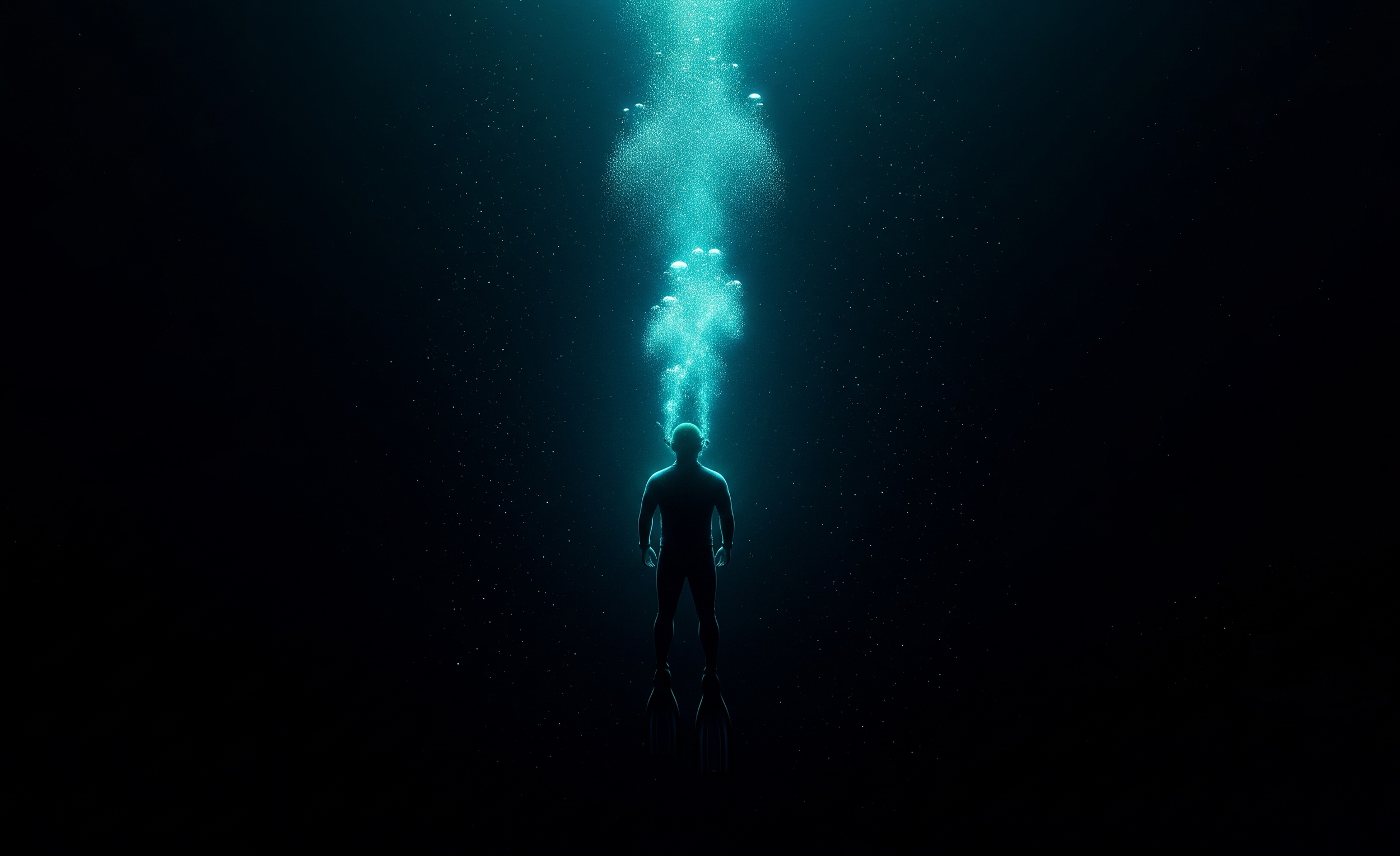The Journey Inward: Exploring the Depths of Your Three Minds
In our fast-paced, outwardly focused world, we often neglect the vast and intricate landscape that resides within us – the realm of our own minds. I believe that understanding the different layers of our internal world is fundamental to living a more purposeful, fulfilling, and connected life.
Today, I want to guide you through a profound inner journey, a step-by-step exploration of what I call the "Journey of the Minds." This isn't just a theoretical exercise; it's a practical pathway to connect with the different facets of your being: your conscious awareness, your underlying subconscious, and the expansive Universal Mind that binds us all.
Think of your mind not as a singular entity, but as a vast ocean, with each layer holding unique characteristics and profound potential. Just as a skilled diver navigates the different depths of the sea, we can learn to navigate the depths of our inner world, gaining insights, healing, and a deeper understanding of ourselves and our place in the cosmos.
This journey is an invitation to slow down, turn inward, and discover the incredible power that lies dormant within. It's a chance to move beyond the surface chatter of your daily thoughts and tap into the wellspring of creativity, wisdom, and interconnectedness that resides at your core. Are you ready to dive in?
Step One: Anchoring Yourself in the Present Moment
The foundation of any inner exploration lies in the ability to anchor ourselves in the present moment. This initial step emphasizes the importance of mindfulness, a practice rooted in ancient wisdom traditions and now widely recognized by modern psychology for its numerous benefits, including stress reduction, improved focus, and emotional regulation.
Comfort and Posture: Finding a comfortable position, whether sitting or lying down, will minimize physical distractions and allow your attention to turn inward more easily. Closing your eyes will further reduce external stimuli and facilitate a deeper sense of internal focus.
The Breath as an Anchor: Paying attention to your breath is a fundamental mindfulness technique. Your breath is always with you, a constant anchor to the present. Notice the sensation of the air entering and leaving your body, the gentle rise and fall of your chest or abdomen. There's no need to change your breathing; simply observe it. This simple act begins to quiet the mental chatter and brings you into the "now."
Dropping into the Body: The phrase "drop out of your head and into your body" is a powerful reminder to shift your awareness from the realm of constant thinking to the sensations of your physical being. Feel the points of contact with the surface supporting you, notice any subtle sensations in your body without judgment.
The Ocean Metaphor: The imagery of a vast ocean with distinct layers provides a powerful framework for our exploration. Visualize this ocean in your mind's eye. Notice its expansiveness and the potential for diverse experiences within its depths. Envision yourself as a skilled diver, equipped with curiosity and intention, ready to explore these inner landscapes.
Step Two: Connecting with the Conscious Mind
This step focuses on acknowledging and appreciating your conscious mind, the part of your awareness that is active when you are awake and engaged with the world.
The Deliberate Breath: This type of long, slow, and deep breathing serves to heighten your awareness and prepare you for the visualization exercise. Holding the breath briefly can create a subtle shift in your internal state, enhancing focus.
Visualization of the Surface: Imagine yourself at the sunlit surface of the ocean. The dancing waves symbolize the active, often fluctuating nature of your conscious thoughts. The sunlight represents clarity and awareness.
The Beta Brainwave State (13-30 Hz): This is your normal waking consciousness when you are alert, focused, and engaged in mental activity such as problem-solving, decision-making, and processing information. Your conscious mind is responsible for a multitude of functions that enable you to navigate the external world effectively. It allows for:
Logical Reasoning: Analyzing information and drawing conclusions.
Decision Making: Evaluating options and making choices.
Planning and Goal Setting: Formulating intentions and strategies.
Language and Communication: Expressing thoughts and understanding others.
Attention and Focus: Selectively concentrating on relevant information.
Honoring the Conscious Mind: Take this moment of breath-holding to acknowledge and appreciate the incredible work your conscious mind does for you every single day. Recognize its role in your learning, your interactions, and your ability to navigate the complexities of life.
Step Three: Transition
This step marks a transition, a releasing of the focused energy of the conscious mind and a preparation for deeper exploration into the subconscious mind. At this stage an audible exhale will help you drop in deeper by using physical acts of release. They help to dissipate any tension held in the body and mind, signaling a shift from the active state of the conscious mind to a more receptive state. This is the perfect way to let go and prepare to descend into the deeper layers of your being.
Step Four: Descending into the Subconscious Mind
This step guides you into the realm of the subconscious mind, a powerful and often misunderstood aspect of our mental landscape.
Deeper Dive Visualization: As you take the next deep breath, visualize yourself gently diving beneath the surface of the ocean. The sunlight begins to soften, and the turbulent surface waves give way to calmer waters. This imagery symbolizes the transition from the active conscious mind to the deeper, less readily accessible subconscious.
The Subconscious as Storage: The subconscious mind acts as a vast storage house for memories (both vivid and forgotten), emotions (both processed and unexpressed), beliefs (both empowering and limiting), habits, and automatic responses. It operates largely outside of our conscious awareness but exerts a profound influence on our thoughts, behaviors, and feelings. Think of it as the autopilot of your mind.
Alpha and Theta Brainwave States: As you enter the subconscious realm, your brainwave activity slows down from the faster beta waves to the slower alpha and theta waves.
Alpha Waves (8-13 Hz): Associated with relaxation, a state of calm alertness, and a bridge between conscious and subconscious thinking. It's often experienced during meditation, daydreaming, and light relaxation.
Theta Waves (4-7 Hz): Linked to deeper relaxation, intuition, creativity, vivid imagery, and access to subconscious memories and emotions. This state is often experienced during deeper meditation, hypnosis, and the transitional phase between wakefulness and sleep.
Accessing Memories and Healing: The alpha and theta states provide a window into the subconscious mind, making it possible to access buried memories, understand the roots of emotional patterns, and facilitate emotional healing. Exploring this realm can lead to greater self-understanding, uncovering hidden talents, and connecting with your intuition.
Step Five: Further Release
Similar to Step Three, this exhale and sigh signify a further letting go, allowing you to release any lingering tension or mental activity as you prepare to descend even deeper. It's a physical and energetic act of surrender to the deeper levels of consciousness.
Step Six: Accessing the Universal Mind
This profound step takes you into the realm of the Universal Mind, the collective field of intelligence, energy, and consciousness that underlies all of existence.
Deepest Dive Visualization: Visualize yourself gently reaching the very bottom of the ocean floor. The water is still and serene, and a sense of profound peace permeates your being. This is a space beyond your individual thoughts and emotions.
The Delta Brainwave State (0.5-4 Hz): At this deepest level, your brainwave activity slows down to the delta state. Delta waves are the slowest brainwave frequencies and are associated with deep sleep, profound relaxation, healing, and a sense of unity or oneness. It is believed that in this state we tap into a collective unconscious or a universal field of consciousness.
Inspiration, Insight, and Interconnectedness: The Universal Mind is often described as a source of profound inspiration, intuitive insights, and timeless wisdom. It's a place where the boundaries of the individual self dissolve, and a deeper understanding of the interconnectedness of all things can arise. The experience of merging with the Universal Mind is often described as a feeling of deep connection to all of existence.
Transcending Limitations: In this state of profound stillness, the limitations of the ego and the individual self can temporarily recede, allowing for a broader perspective and a deeper sense of belonging to something much larger than oneself.
Step Seven: Returning with Awareness
This final step marks your return from the depths of your inner exploration, carrying with you the insights and peacefulness gained during your journey.
The Final Exhale: The final audible exhale signifies the completion of the active part of the journey. It's an opportunity to release any remaining tension and fully integrate the experience.
Embracing Peacefulness: Take a moment to savor the peacefulness that may have arisen during your exploration. Notice any shifts in your awareness or any insights that may have surfaced.
Honoring the System: Reflect on the unique contributions and the interconnectedness of your conscious, subconscious, and Universal Minds. Recognize that they work together as a dynamic system, each playing a vital role in your overall experience of reality. Understanding and honoring each aspect can lead to greater self-awareness and integration.
The "Journey of the Minds" is more than just a guided meditation; it's a pathway to deeper self-understanding and a richer connection to the world around you. By consciously exploring the different layers of your mental landscape, you can gain valuable insights into your beliefs, thoughts, behaviors, and feelings, and your place in the grand tapestry of existence.
Regularly engaging in practices like this can cultivate greater mindfulness in your daily life, allowing you to navigate challenges with more awareness and resilience. It can unlock creativity by tapping into the subconscious mind and foster a profound sense of interconnectedness by experiencing the Universal Mind.
Just as a skilled diver learns to navigate the currents and depths of the ocean, you can become a skilled navigator of your inner world. The more you explore, the more you will discover the incredible potential that lies within.









